Slavery in Idaho
Idaho, despite being a territory during the height of American slavery and not a state until long after the Civil War ended, was nonetheless shaped by national and transregional institutions that were embedded in slavery’s logic. Its economy, its settlers, its universities, and even its legal framework bore the imprints of a society that depended on and benefited from African American exploitation.
As a part of the western frontier, Idaho attracted settlers from across the United States, many of whom arrived with ideologies and wealth rooted in slavery. Individuals who had made fortunes through enslaved labor in the South used those gains to invest in mining ventures, railroads, land speculation, and agricultural enterprises in Idaho. The wealth extracted from the backs of Black laborers in cotton fields, sugar plantations, and tobacco farms was reinvested in new enterprises in the American West, including Idaho.
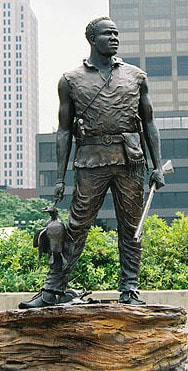
In this way, even in the absence of formal slavery within Idaho’s borders, the state became a repository for slavery-generated capital. These investments helped build infrastructure, funded early businesses, and shaped the economic landscape of the territory. The transference of wealth into Idaho territory was not neutral; it carried with it racial ideologies, systems of exclusion, and hierarchies that would continue to shape the treatment of Black and Indigenous peoples for decades.
Idaho’s participation in the slavery industrial complex also came through federal contracts and infrastructure development tied to national expansion. The construction of the railroads, which was essential to Idaho’s integration into the national economy, was facilitated by capital that had been heavily intertwined with slavery. Southern politicians and businesspeople with roots in slavery invested in railroads, mines, and land throughout the West.
Many of the large rail companies such as Union Pacific and Central Pacific, whose operations reached into Idaho, were funded by banking institutions that had either financed slaveholding planters or directly profited from the slave trade. The deeply racialized labor dynamics of these corporations—first Chinese and Indigenous labor, then later segregated labor systems—mirrored the structural inequalities first forged in slavery. Idaho’s early economic development must be understood as part of this continuum.
Idaho’s own labor market bore the scars of this history. Although there was no widespread practice of legal slavery within the state, the broader exclusion of Black labor from opportunities, along with violence and discriminatory laws, reproduced the essential outcomes of slavery—Black economic suppression, civic marginalization, and political disenfranchisement. Black people who came to Idaho during the late 19th and early 20th centuries found that they were largely unwelcome in labor unions, denied equal housing and education, and forced into the lowest rungs of the economy. These patterns were not accidental; they were the enduring legacies of a society built on anti-Black exploitation.
Idaho was not free of enslaved persons entirely. In the pre-territorial and early territorial days, when fur traders, missionaries, and settlers passed through or temporarily resided in the area, there is historical evidence that a small number of enslaved Black people were brought into the region by white Southerners migrating westward. These enslaved individuals, often left unnamed in records, were forced to work in households and on frontier labor projects. Their lives were marked by profound isolation, danger, and invisibility. Without the protections of any established legal system and surrounded by a white settler society that was hostile to Black presence, their bondage was rendered even more precarious.
Following the end of the Civil War and the ratification of the Thirteenth Amendment, the federal government attempted to support formerly enslaved persons through the establishment of the Freedmen’s Bureau. Although Idaho was not a primary site for Freedmen’s Bureau operations due to its minimal population of formerly enslaved people, the Bureau’s absence is itself revealing. It meant that Black migrants who came to Idaho seeking freedom and opportunity were left without institutional support. They had to navigate a hostile and often violently exclusionary society without the aid of government infrastructure. The lack of Freedmen’s Bureau infrastructure in Idaho further marginalized Black Idahoans, who were left without federal protection from discriminatory practices in education, employment, and justice.
Despite these challenges, African Americans in Idaho forged communities and fought for their rights. The earliest Black residents of Idaho worked primarily in railroads, service industries, and mines. They founded Black churches, fraternal organizations, and advocacy groups. In Boise, Pocatello, and other early urban centers, Black men and women built communities in the face of white hostility. Their struggle was not just against economic inequality, but against a historical narrative that sought to erase their presence from the state altogether.
Notable Black abolitionists and civil rights laborers also emerged from these communities. While Idaho may not have produced nationally known figures during the antebellum period, the twentieth century saw a rise in Black Idahoans who used the lessons of abolitionism to demand civil rights. Leaders like Gertrude F. Goodrich, who served as an NAACP representative and Black educator, and members of the Idaho Black History Museum worked to preserve and share stories of resistance. These individuals viewed themselves as heirs to the abolitionist tradition, understanding that the fight for Black freedom did not end with emancipation but continued in the push for equality, justice, and representation.
The educational institutions of Idaho have also been shaped by the legacy of slavery. Many of the early benefactors of colleges and universities in Idaho had ties to eastern wealth derived from slavery. In particular, some philanthropic foundations that supported educational development in the state had received donations from fortunes built on the slave trade, including textile magnates and railroad tycoons who had profited from enslaved labor. Although these institutions often present themselves as neutral or progressive entities, their historical development is inseparable from the racialized wealth that funded them. Today, these universities rarely acknowledge their entanglements with slavery, and their curriculums frequently overlook the role that Idaho played in the broader American racial economy.
The political institutions of Idaho also participated in systems of racial exclusion that echoed the political disenfranchisement of slavery. For much of the 20th century, the state maintained racially restrictive housing covenants, exclusionary immigration and labor laws, and policing practices that disproportionately targeted Black people. Black Idahoans, though small in number, were subjected to surveillance, discriminatory arrests, and political isolation. These systems of control were modern manifestations of the social death that defined slavery—a condition where Black life was rendered marginal, disposable, and illegible within the official state narrative.
Idaho’s legal system also reflected the enduring influence of slavery’s racial logics. While the state did not formally codify slavery into law, it did enact legislation that served to criminalize and control Black bodies. Vagrancy laws, anti-miscegenation statutes, and exclusionary voting requirements all served to limit Black freedom. These legal restrictions operated in tandem with social norms that devalued Black life and normalized white supremacy. Black Idahoans were frequently denied fair legal representation and subjected to jury discrimination, reinforcing their marginal status within the justice system.
Narratives from Black Idahoans throughout the 19th and 20th centuries reveal the emotional and psychological toll of living in a state that positioned itself as free yet maintained the conditions of racial unfreedom. These narratives—found in oral histories, church records, and family accounts—tell of people who migrated to Idaho believing in the myth of western freedom, only to find new forms of bondage in the form of economic exclusion, political marginalization, and social erasure. The trauma of these experiences was passed down through generations, shaping the ways in which Black Idahoans viewed themselves, their communities, and their place in American society.
Despite these obstacles, Black resistance in Idaho never ceased. From early Black railroad workers who unionized in the face of discrimination, to Black women who organized mutual aid societies to support families excluded from white charities, to modern-day activists fighting for police accountability and educational equity, the tradition of resistance in Idaho is both rich and ongoing. These freedom fighters carried the spirit of abolition into the present, linking the unfinished business of emancipation to the contemporary struggle for Black liberation.
As the 19th century transitioned into the 20th, the demographic makeup of Idaho continued to shift with the arrival of African Americans from other parts of the United States. Many were drawn westward by the promise of jobs in the railroad industry, agriculture, and mining. Idaho’s rail hubs in cities like Pocatello and Nampa became critical points of entry for Black laborers. The Oregon Short Line Railroad, which had roots connected to the Union Pacific system—an enterprise deeply enmeshed in capital amassed through slavery and the slave trade—was one of the principal employers of Black workers. African American porters, cooks, and maintenance crews labored under harsh conditions, with limited protection from unions, few avenues for promotion, and widespread racial hostility.
The economic structures that governed Idaho’s railroads, mines, and agricultural sectors did not simply reproduce the exploitative elements of the South’s plantation economy; they reshaped them to fit the frontier. In many ways, Black laborers in Idaho were placed in a new form of economic bondage. Their work, though nominally free, was tightly regulated by white supervisors and constrained by racist employment practices. Just as formerly enslaved people were denied land and economic opportunity during Reconstruction, Black Idahoans were prevented from accessing the full benefits of the state’s growing economy. They were paid less, fired first, and rarely promoted.
At the same time, white workers in Idaho, many of whom were recent European immigrants or white Americans moving westward, often responded to the presence of Black labor with animosity. Labor unions, particularly those affiliated with the American Federation of Labor, frequently excluded Black workers outright. The exclusion of Black Idahoans from collective bargaining further entrenched their economic vulnerability. In cities such as Boise and Twin Falls, Black laborers and their families found themselves forced into isolated neighborhoods, shut out of housing opportunities, and regularly harassed by local authorities. Even as Idaho’s population boomed during the early 20th century, the Black population remained small—both because of active exclusion and the punishing conditions that forced many to leave.
Those who stayed formed resilient communities that served as lifelines for survival. Black churches, particularly the Baptist and African Methodist Episcopal (AME) congregations, became central hubs of spiritual, social, and political life. These churches were more than religious institutions—they were meeting grounds, cultural centers, and sites of resistance. Within their walls, Black Idahoans organized mutual aid societies, hosted lectures on civil rights, taught their children history, and created a space where their humanity was affirmed. These churches, often underfunded and frequently targeted by white authorities, still managed to build cohesion among dispersed Black families.
The women of Idaho’s Black communities played an especially vital role in this regard. Women organized fundraising drives, taught Sunday school, and maintained social networks that supported widows, orphans, and new arrivals. Though largely excluded from public office and higher education, Black women exerted tremendous influence through their churches, homes, and community groups. Their labor, both paid and unpaid, undergirded the Black resistance movement in the state, sustaining families in the face of structural racism and economic deprivation.
Education, another front in the legacy of slavery’s impact, proved a persistent battleground in Idaho. Public schools were technically integrated, but in practice they were often segregated by neighborhood zoning and informal practices. Black children faced lower expectations, disproportionate discipline, and culturally biased curricula that erased their history. This was no accident. The educational system in Idaho, like in many other western states, was built upon a Eurocentric foundation that valorized settler narratives and minimized or ignored the role of Black Americans in state and national history.
In the early 20th century, Black parents in Idaho fought back against this erasure by demanding better educational opportunities and by creating supplemental educational programs. They hosted Black history classes in churches, organized literacy programs, and lobbied school boards for fairer treatment. These efforts echoed the broader tradition of resistance among formerly enslaved people, who understood education as both a tool of liberation and a site of struggle. In many ways, the battles fought by Black parents in Idaho classrooms were a continuation of the Reconstruction-era campaigns to establish Black schools and literacy in the face of white violence.
One cannot fully understand the legacy of slavery in Idaho without exploring the connections between Idaho’s institutions of higher education and slavery-derived capital. The University of Idaho, Idaho State University, and Boise State University, though founded after slavery was formally abolished, nonetheless benefited from endowments, land grants, and philanthropic gifts connected to the economic system that slavery built.
Wealthy industrialists and railroad magnates, some of whom had direct ties to slavery or profited from industries built upon its aftermath, contributed large sums to these institutions. The Morrill Land-Grant Acts of 1862 and 1890, which allocated federal lands for the establishment of agricultural and technical colleges, redistributed land that had often been violently seized from Native American nations. Much of this land had been surveyed, cleared, and cultivated by companies or settlers enriched by slavery.
The universities that grew from this arrangement rarely acknowledged these foundations. For decades, the curriculum ignored or outright denied the existence of Idaho’s Black population, perpetuating the myth of a homogenous, white frontier. Even in the late 20th century, Black students at these institutions frequently faced isolation, racism, and a lack of cultural resources.
Activism by students and faculty of color pushed for changes—more inclusive curricula, African American studies programs, and diversity initiatives—but progress remained slow and uneven. The silence of Idaho’s universities on the matter of slavery’s legacy continues to contribute to a broader historical amnesia, which has allowed racial inequalities to persist unchallenged.
The criminal justice system in Idaho similarly bore the imprint of slavery’s logics. Throughout the 20th century, Black Idahoans were disproportionately targeted by law enforcement and overrepresented in the state’s prison population. Policing practices, inspired in part by Southern slave patrols and reinforced by racially coded laws, positioned Black people as inherently suspect. This perception extended to the courts, where Black defendants were frequently denied fair trials, excluded from juries, and handed longer sentences. In rural counties especially, Black travelers were often subject to informal sundown policies—warnings not to remain in town after dark under threat of violence or arrest.
These conditions paralleled the postbellum South’s reliance on the convict lease system, where newly freed Black people were re-enslaved under the guise of criminality. Though Idaho did not have a formal convict lease system, the treatment of Black Idahoans by the criminal justice system reflected the same underlying belief: that Black freedom was conditional, always subject to revocation by white authority. The prison system became another apparatus through which Black autonomy was curtailed and Black labor was exploited.
Even in the face of these obstacles, Black Idahoans resisted. In the 1940s and 1950s, the state saw an emergence of civil rights organizing, led by church leaders, teachers, and labor activists. These individuals and groups fought against discriminatory hiring practices, unequal education, and racist housing policies. During World War II, Black workers who contributed to the war effort in Idaho's shipyards, factories, and agricultural sectors demanded fair wages and protection from racist supervisors. Their struggle connected the fight against fascism abroad with the fight against white supremacy at home, echoing the “Double V” campaign that many African Americans embraced during the war years—victory against fascism overseas and victory against racism in America.
Postwar civil rights activism in Idaho was deeply informed by the abolitionist legacy. Organizers viewed their work as a continuation of the struggle that began with enslaved Africans fighting for freedom in the Americas. Their speeches, pamphlets, and community meetings invoked the names of Frederick Douglass, Sojourner Truth, and Harriet Tubman. They saw themselves not as isolated actors on the western fringe, but as part of a national movement rooted in centuries of Black resistance. The 1960s and 70s brought about modest gains, including greater public awareness, new anti-discrimination laws, and the establishment of community groups dedicated to racial justice.
Despite these efforts, Idaho has remained a difficult place for Black people to thrive. The state's small Black population, persistent racism, and conservative political climate have combined to limit opportunities and suppress resistance. Hate groups like the Aryan Nations, once headquartered in northern Idaho, have targeted Black residents, civil rights organizers, and religious minorities. Their presence, and the often-tepid response of state authorities, has further exposed the ways in which white supremacy continues to operate with impunity in the state. Today, Black Idahoans continue to fight for justice in every arena of life. They organize protests, demand police accountability, advocate for inclusive education, and celebrate Black history through cultural institutions such as the Idaho Black History Museum in Boise. The museum itself stands as a testament to Black resilience. Located in a former Black church, it houses artifacts, photographs, and stories that trace the journey of African Americans in Idaho—from the shadow of slavery to the ongoing struggle for equality. Its mission challenges the erasure that has so often defined Idaho’s approach to race, and it offers a vital counter-narrative to the dominant history.
Modern corporations operating in Idaho also have slavery’s legacy in their foundations. National banks with branches across Idaho, such as Wells Fargo, Bank of America, and JPMorgan Chase, have all acknowledged historical ties to slavery. These banks, through mergers and acquisitions, absorbed institutions that financed the slave trade, insured enslaved people as property, or profited from the cotton economy. Today, their wealth and influence shape Idaho’s economy in profound ways—from mortgage lending to small business financing—yet the historical debt owed to Black Americans remains unpaid. The wealth these companies derived from slavery was never redistributed to its victims; instead, it became part of a capitalist infrastructure that continues to widen the racial wealth gap.
Many of Idaho’s largest agricultural and industrial employers rely on supply chains and labor systems that echo the exploitative practices of slavery. Migrant laborers, prison workers, and employees of color are disproportionately subjected to low wages, poor conditions, and systemic neglect. Although the workers today are not enslaved, the patterns of exploitation—control over labor, racialized hiring, denial of autonomy—bear striking similarities to slavery’s economic logic. The dehumanization required to enslave millions of Africans still lingers in the economic practices of modern corporations.
The story of slavery in Idaho is not one of physical bondage en masse but of deep complicity in a national system that used Black labor as a foundational resource. Idaho, like every other state, was shaped by slavery—not simply through direct ownership of enslaved people, but through economic entanglements, cultural erasure, institutional silence, and racial exclusion. To understand Idaho’s past and present is to acknowledge that slavery’s reach was national, its logic enduring, and its consequences ongoing.
As the twenty-first century progressed, the lingering effects of slavery continued to manifest themselves in the structural and interpersonal racism that shaped Black life in Idaho. Even with the absence of formal plantations or large enslaved populations in Idaho’s past, the echoes of slavery were embedded in how the state’s institutions operated, how history was taught, and how power was distributed across race and class lines. This legacy was not frozen in the past; it actively influenced Black Idahoans’ present-day experiences in housing, employment, healthcare, education, and political participation.
One of the most persistent mechanisms through which the legacy of slavery revealed itself in Idaho was residential segregation. While Idaho did not have the same extensive history of redlining as some Midwestern and Southern states, real estate covenants and zoning practices informally accomplished the same objective—concentrating Black families into economically disadvantaged and socially isolated neighborhoods. This process was especially visible in cities like Boise, where Black families seeking to buy homes often encountered realtors unwilling to sell to them in majority-white areas, banks reluctant to provide fair mortgage terms, and local residents who employed subtle and overt intimidation tactics to prevent integration.
These housing barriers were not incidental—they were the direct consequences of racial ideologies rooted in slavery. Just as enslaved Africans had been confined to specific roles and spaces, post-emancipation Black people in Idaho were confined to areas deemed acceptable by the white majority. In many Idaho cities, Black residents were effectively steered into older, underdeveloped neighborhoods, with poor infrastructure, inadequate public services, and limited access to economic opportunity. The long-term consequences of this segregation have been devastating. Intergenerational wealth accumulation—much of which stems from home ownership—remains deeply unequal. Even today, Black Idahoans are far less likely than their white counterparts to own homes or pass property on to their descendants.
In the realm of employment, the racial stratification of labor in Idaho persisted long after the official end of Jim Crow-era practices. Black Idahoans were consistently underrepresented in public sector jobs, management positions, and high-paying industries such as technology, healthcare, and finance. They were overrepresented in low-wage service jobs, temporary labor, and part-time positions with little or no benefits. The state’s business community, shaped by a century of white dominance and racial preference, maintained networks that excluded Black professionals from career advancement opportunities. These patterns were not accidental—they reflected the same hierarchies that slavery had installed in the national labor system, where Black people were expected to serve but never lead, to labor but never own.
This structural inequality extended to the healthcare system as well. Although Idaho’s overall healthcare infrastructure faced challenges due to its rural geography and limited funding, the disparities for Black Idahoans were particularly stark. Black residents often received lower quality care, faced longer wait times, and were more likely to report discrimination from healthcare providers. These inequalities mirrored the dehumanization Black people had endured under slavery, where their bodies were viewed as commodities, experimental subjects, or burdens rather than human beings deserving of care. Historical neglect, compounded by contemporary bias, has contributed to disproportionately high rates of chronic illness, mental health challenges, and maternal mortality among Black Idahoans.
The education system in Idaho has long been a contested site of memory, identity, and control. Slavery’s influence is clearly visible in the content and structure of school curricula, which for generations erased Black contributions to the state and nation. Students in Idaho grew up learning about the westward expansion of white settlers, the valor of pioneers, and the development of railroads and agriculture—often with no mention of Black Americans, slavery, or the centuries of racial violence that shaped the country. This omission was not merely pedagogical neglect; it was a deliberate act of cultural erasure that served to uphold the myth of white purity and exceptionalism in Idaho.
Black students in Idaho schools were often isolated, their cultural experiences ignored or pathologized, and their academic potential underestimated. Teachers, many of whom lacked training in cultural competence or anti-racist pedagogy, failed to address the microaggressions and overt racism Black students faced. This environment, reminiscent of the antebellum denial of education to enslaved people, continued to place Black children at a disadvantage. In response, Black families and educators fought to include more inclusive materials, advocate for anti-racist training, and celebrate Black history through extracurricular programs and community events.
One of the most visible legacies of slavery in the contemporary period has been the persistent underrepresentation of Black Idahoans in political office and government leadership. Despite their long history in the state, Black residents have rarely held city council seats, legislative positions, or executive roles in state agencies. This political exclusion reflected the long-standing efforts—dating back to the antebellum period—to deny Black people political power. While legal barriers such as poll taxes or literacy tests were not present in modern Idaho, informal barriers—including campaign financing challenges, racial bias among voters, and media neglect—continued to disenfranchise Black Idahoans.
Still, Black political organizing in Idaho has had moments of breakthrough and sustained influence. The formation of civic groups such as the Idaho Black Caucus and the Idaho African American Chamber of Commerce brought Black voices to the political table. Community leaders and faith-based coalitions lobbied for fair housing laws, educational equity, and criminal justice reform. Their efforts, grounded in the abolitionist tradition, sought to dismantle the systems that had persisted long after slavery’s formal end.
The cultural expression of Black Idahoans has also served as a powerful counter-narrative to the dominant myths about race and history in the state. Artists, poets, musicians, and storytellers have used their work to explore themes of memory, resistance, identity, and survival. Drawing on traditions forged during slavery—oral storytelling, spirituals, coded language—Black cultural producers in Idaho have illuminated the unbroken thread of Black creativity and resilience. Their art challenges the idea that Idaho is or ever was a “white space.” It reveals the diversity of the Black experience, from pain to triumph, and reclaims a history that has too often been stolen or buried.
Another important dimension of Idaho’s connection to the legacy of slavery lies in the way its public policies have disproportionately harmed communities of color. In the realm of law enforcement, Black Idahoans have been subject to racial profiling, excessive force, and discriminatory policing practices. Traffic stops, arrests for minor offenses, and surveillance of Black community gatherings have been disproportionately directed at Black residents. These practices echo the antebellum and Reconstruction-era control mechanisms that sought to limit Black mobility, autonomy, and resistance.
While Idaho does not have the large-scale urban uprisings that have occurred in other states, Black communities have nonetheless experienced—and protested—racial injustice. Protests following the killings of George Floyd, Breonna Taylor, and other Black Americans saw Black Idahoans and their allies marching in Boise, Coeur d'Alene, and other cities. They carried signs linking contemporary police violence to slavery’s legacy, demanded systemic reform, and challenged the state’s silence on racial issues. These demonstrations often met with hostility—from police departments, local officials, and white nationalist counter-protesters—exposing the deep currents of denial and resistance that continue to shield Idaho from confronting its own past.
The legal system itself continues to operate in ways that reflect slavery’s racial hierarchies. Black Idahoans are more likely to be incarcerated, more likely to receive longer sentences for the same crimes, and less likely to be offered alternatives such as rehabilitation programs or probation. Within the prison system, they are overrepresented in solitary confinement and underrepresented in educational and vocational opportunities. These patterns mirror the systemic criminalization of Black life that has existed since slavery, when laws were designed to turn freed Black people into criminal subjects who could be legally re-enslaved through imprisonment.
Efforts to address these injustices have emerged through grassroots organizing, legal advocacy, and public education campaigns. Black-led organizations have demanded greater transparency in policing, called for the reinvestment of public funds into communities, and worked to expunge the criminal records of those unjustly targeted. Their work builds on the legacy of resistance that began with enslaved people escaping bondage, organizing revolts, and fighting for emancipation—continuing that struggle into the twenty-first century.
In the academic sphere, a growing number of scholars, educators, and students have begun to investigate Idaho’s ties to slavery and racial capitalism. These researchers, many of them Black or allied with Black liberation movements, have uncovered archival documents, oral histories, and forgotten narratives that challenge the prevailing myth of an “untainted” Idaho. Their work includes critical analyses of land grant colleges, banking histories, mining corporations, and railroad companies—all of which played roles in slavery’s economic web. Through their scholarship, they force the public to reckon with the uncomfortable truth that even states without slave codes or slave auctions can be deeply complicit in slavery’s legacy.
In recent years, there has been increased attention to the ways in which corporations in Idaho benefit from or are linked to wealth generated by slavery. Businesses that received early investment from slave-linked capital, or that merged with companies with slavery-derived assets, continue to operate without public scrutiny. Meanwhile, Black Idahoans continue to confront the economic disadvantages passed down through centuries of exclusion. The racial wealth gap remains stark, with white families possessing dramatically more assets, savings, and property than Black families. This gap is not the result of individual failure but of systemic theft—generations of unpaid labor, denied opportunities, and racially discriminatory policy.
To begin to address this legacy, many advocates in Idaho and beyond have called for reparations—not only in the form of financial restitution, but also in policy reform, public education, and institutional accountability. These reparations would involve investing in Black communities, creating mechanisms for wealth redistribution, and acknowledging the historical truth of slavery’s impact. While the idea of reparations remains controversial in some circles, its foundation is deeply moral: to redress the harm that has been inflicted over centuries and to move toward a society based on justice, equity, and historical honesty.
The state of Idaho, like the nation as a whole, stands at a crossroads. It can continue to deny the existence of slavery’s legacy within its borders, maintaining the myth of innocence that has long shielded it from critical self-examination. Or it can confront that legacy directly, acknowledging its economic, cultural, and institutional dimensions and taking steps to repair the damage. This process will not be easy. It will require courage from political leaders, humility from institutions, and sustained activism from the people. But it is necessary if Idaho is to live up to the values of freedom, justice, and equality that it claims to uphold.
At its heart, the story of slavery in Idaho is not a story of absence, but of presence—of the unseen forces that have shaped the state’s history, of the buried truths that must now be unearthed, and of the enduring struggle of Black Idahoans to claim their rightful place in the state’s past, present, and future. Their legacy is one of resistance, resilience, and vision—a legacy that challenges us all to remember, to reckon, and to repair.
To speak of slavery in Idaho is to acknowledge how the most enduring systems of American racial capitalism did not require the physical chains of the plantation to manifest. Instead, they shaped the very soil into which the state was settled, the economic systems that propelled its growth, the institutions that codified its values, and the imaginations that told its story. Idaho was not insulated from the evils of slavery; rather, it was indirectly nourished by them, receiving both the economic fruits and the ideological poison that came from the ownership and exploitation of Black human life across the United States. The failure to recognize this truth is itself a legacy of slavery—a deliberate forgetting rooted in the desire to absolve the present of accountability to the past.
One of the central challenges in confronting the legacy of slavery in Idaho is the myth of exceptionalism. This myth suggests that because Idaho was geographically distant from the Deep South and never passed laws formally sanctioning slavery within its borders, it is somehow untainted by the violence of that institution. Yet this notion ignores the broader historical and national context.
Slavery was not confined by state lines; it was a nationwide system supported by federal law, enriched by national commerce, and advanced by white settler colonialism across the continent. Idaho’s development, particularly in its early territorial years, was enabled by the displacement of Indigenous nations and fueled by the investments of capital rooted in slavery, racial exclusion, and dispossession.
The dispossession of Native land in Idaho cannot be divorced from the broader context of slavery and racial hierarchy. The Indian Removal policies, military campaigns, broken treaties, and the forced relocation of Indigenous peoples that made way for white settlement in Idaho were part of the same racial logic that justified the enslavement of African people. The ideology of white supremacy not only placed Black people at the bottom of the racial hierarchy but also designated Indigenous peoples as obstacles to be conquered. Thus, the land into which Idaho’s early economy was planted was obtained through genocidal practices that paralleled the horrors of slavery, both in scale and intent. Slavery and settler colonialism, far from being isolated systems, were mutually reinforcing tools of white dominance.
As the mining booms of the 1860s and 1870s attracted white settlers to Idaho’s mountainous regions, the capital fueling these endeavors was often traced back to eastern financial institutions that profited directly from the cotton economy and the slave trade. Cotton harvested by enslaved labor financed the banks, insurance companies, and trading houses that later backed western mining and rail ventures.
Gold and silver extracted from Idaho’s terrain did not enter a neutral marketplace; they were absorbed into an economy already structured by racialized wealth. And the labor that extracted these minerals—often Indigenous, Chinese, and, in rare but real cases, Black—was managed through systems that mirrored slavery’s control over mobility, bodily autonomy, and economic agency.
The churches and religious institutions that took root in Idaho similarly reflected the moral contradictions of a nation built on slavery. Some white-led congregations openly supported missionary efforts while ignoring or denying the humanity of enslaved or formerly enslaved persons. Even well-meaning denominations, such as Methodists and Baptists, often failed to challenge the racist structures around them, instead emphasizing assimilation over justice.
The missionary campaigns launched to “civilize” Native peoples were grounded in the same paternalistic logics used to justify slavery—that white Christianity had a divine mandate to rule over nonwhite bodies. By contrast, the Black churches that emerged in Idaho—though fewer in number—embraced the theology of liberation, resistance, and dignity rooted in the experience of enslavement and emancipation.
These Black churches served as sanctuaries of survival and resistance, offering spiritual sustenance and practical support to communities excluded from white society. They preserved oral histories, mentored the next generation, and stood as monuments to the resilience of a people who had endured centuries of systemic oppression. Through hymns, sermons, and community gatherings, they transmitted the memory of slavery and its aftermath, ensuring that Black Idahoans did not forget who they were or what they had survived. These churches also trained generations of leaders who would go on to challenge racism in Idaho’s schools, workplaces, courts, and political systems.
The memory of slavery in Idaho has also been preserved and contested in the realm of public history and collective memory. For decades, state-sponsored narratives in museums, textbooks, and historical sites largely ignored the Black presence in Idaho. The focus instead was on the pioneer heroism of white settlers, the industrialization of the West, and the mythic ruggedness of frontier life. This selective memory was not accidental; it was part of a broader national effort to sanitize American history and minimize the role of slavery in shaping its institutions. In Idaho, as in many states, public commemoration reflected white anxieties rather than historical truth.
In recent years, however, Black historians, educators, and activists in Idaho have challenged these erasures. The Idaho Black History Museum, housed in the historic St. Paul Baptist Church, represents a powerful effort to reclaim the state’s past and honor the contributions of African Americans. Through exhibits, educational programs, and public lectures, the museum not only documents Black life in Idaho but also situates it within the broader narrative of American slavery, Reconstruction, and civil rights. This work has been instrumental in forcing the state to grapple with its uncomfortable truths and in providing a space for future generations to learn an unvarnished history.
That unvarnished history includes the contributions of individual Black Idahoans who stood as symbols of resistance, courage, and visionary leadership. One such figure is Mamie Oliver, a longtime professor, activist, and public historian who worked tirelessly to document and elevate the history of Black people in Idaho. Her scholarship and civic engagement helped shine a light on the hidden stories of Black migration, exclusion, and resilience in the state. Through her work, Idahoans gained access to a deeper understanding of how race and power shaped the state’s development, and how the legacy of slavery lived on in its institutions.
Other leaders emerged through labor organizing, youth mentorship, civil rights advocacy, and education reform. Though often unrecognized by the state’s dominant institutions, these individuals built bridges across racial and cultural divides, championed equity, and refused to allow the state’s small Black population to be rendered invisible. Their work—often unpaid, underfunded, and unheralded—embodied the same spirit of resistance that had animated enslaved people centuries before. They too demanded freedom, dignity, and justice—not only for themselves, but for future generations of Black Idahoans.
In the economic sphere, calls for racial equity have pushed some Idaho institutions to begin examining their historical ties to slavery and racial exclusion. A few universities have started internal reviews of their funding histories, asking whether donor money may have come from slavery-enriched fortunes or corporations tied to slavery’s afterlife. This effort mirrors similar inquiries at elite universities across the country and represents a small but significant shift in public consciousness. Yet, these efforts remain largely symbolic without systemic changes in hiring, funding, and curriculum.
The corporations operating in Idaho—especially those in banking, real estate, agriculture, and technology—have yet to fully reckon with their roles in perpetuating inequality. Few have acknowledged the racial wealth gap as a product of historical injustices, let alone taken steps to address it through reparative action. Philanthropic efforts are often shallow and disconnected from the root causes of inequality. Until Idaho’s business community recognizes that it has benefited from systems built upon slavery and white supremacy, and commits to redistributive policies, the structural inequities will persist.
Education reform remains one of the most urgent fronts for confronting slavery’s legacy. Teachers and administrators must be empowered to teach the full history of the United States, including the horrors of slavery, the resilience of the enslaved, the struggle for emancipation, and the continued legacy of racial oppression in all states—including Idaho. Curriculum must be developed in consultation with Black historians, community members, and educators who understand the nuances of race, power, and resistance. Without an honest reckoning in the classroom, Idaho will continue to raise generations of students unaware of the true forces that shaped their world.
At the same time, the inclusion of Black voices in public discourse must be dramatically expanded. Black Idahoans deserve not only representation but also agency in determining how their histories are told, how their communities are supported, and how justice is pursued. Local governments, school boards, and state agencies must develop mechanisms for equitable participation, ensuring that Black residents are not merely consulted but actively empowered. This is not charity—it is restitution for centuries of exclusion rooted in slavery’s enduring legacy.
The question of reparations remains central. While Idaho may never have passed slave codes or operated plantations, the state benefited from the profits of slavery through national financial networks, economic investments, and racial exclusion. As such, it has a moral obligation to participate in national conversations about reparations and to develop local strategies to address racial disparities. These could include housing grants for Black families, educational scholarships, funding for Black-led nonprofits, and investments in historically Black neighborhoods. Reparations in Idaho must be both symbolic and material—acknowledging the past while transforming the present.
As the climate crisis, economic inequality, and political instability accelerate across the country, the stakes for confronting slavery’s legacy become even higher. Black communities in Idaho are disproportionately vulnerable to environmental hazards, economic displacement, and political disenfranchisement. Any serious strategy for sustainability, justice, or democracy must center those most historically harmed by the system—and that begins with an honest accounting of slavery’s impact.
Ultimately, the story of slavery in Idaho is a story of convergence. It brings together the violence of bondage, the silence of denial, the courage of resistance, and the hope of transformation. It reveals that no state is outside the reach of America’s original sin, and that the work of reckoning must be done everywhere, not just in the South. Idaho’s unique geography, demographics, and history do not exempt it from responsibility—they offer a chance to approach that responsibility with creativity, humility, and courage.
The legacies of slavery are alive in Idaho’s economy, schools, prisons, neighborhoods, and politics. They are alive in the generational trauma carried by Black families, and in the generational wealth amassed by white institutions. They are alive in the myths that shape public memory and the truths that struggle to be heard. But within that reality lies the possibility of change—a change driven by knowledge, by solidarity, and by a refusal to forget.
Black Idahoans, past and present, have written themselves into the fabric of this state through resistance, community, labor, and love. Their lives are the true monuments to the unbreakable will of a people long denied their rightful place. Their stories call upon Idaho—and the nation—to confront the full weight of its history and to rise toward a future rooted not in denial, but in justice.

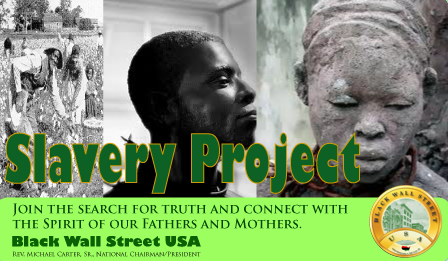
Alabama
Alaska
Arizona
Arkansas
California
Colorado
Connecticut
Delaware
Florida
Georgia
Hawaii
Idaho
Illinois
Indiana
Iowa
Kansas
Kentucky
Louisiana
Maine
Maryland
Massachusetts
Michigan
Minnesota
Mississippi
Missouri
Montana
Nebraska
Nevada
New Hampshire
New Jersey
New Mexico
New York
North Carolina
North Dakota
Ohio
Oklahoma
Oregon
Pennsylvania
Rhode Island
South Carolina
South Dakota
Tennessee
Texas
Utah
Vermont
Virginia
Washington
Washington D.C.
West Virginia
Wisconsin
Wyoming

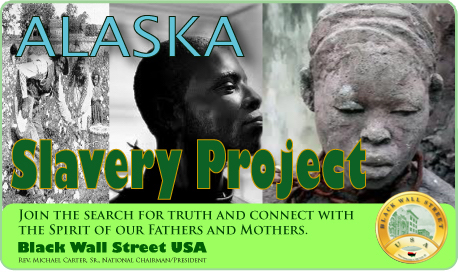
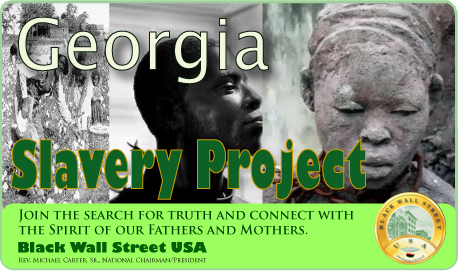

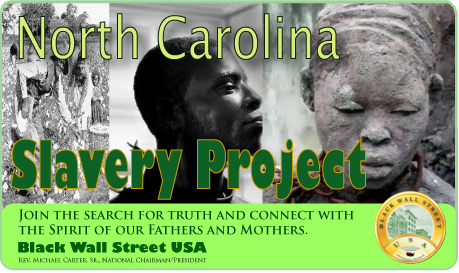
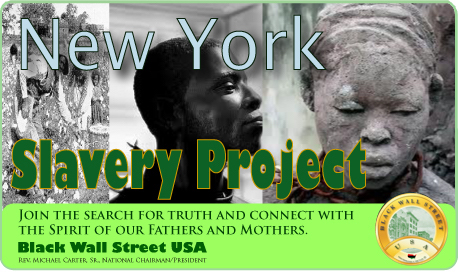

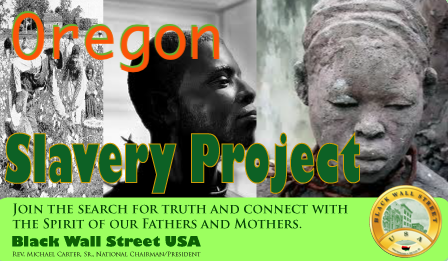

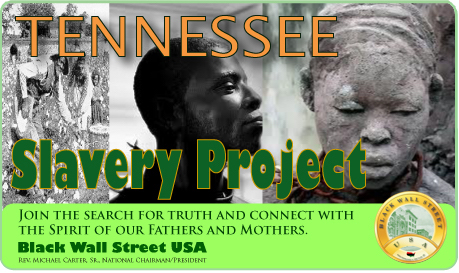
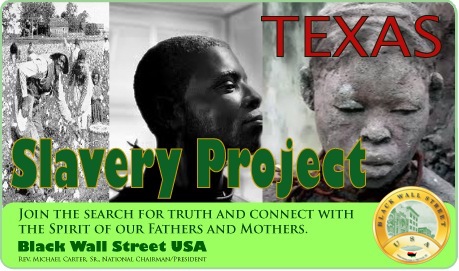
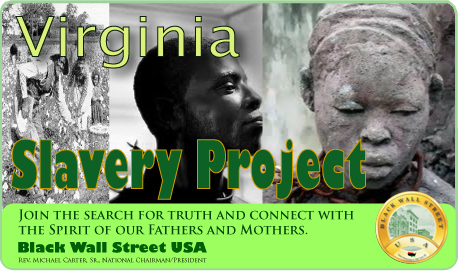


BlackWallStreet.org

Slave Records By State
See: Slave Records By State
Freedmen's Bureau Records
See: Freedmen's Bureau Online
American Slavery Records
See: American Slavery Records
American Slavery: Slave Narratives
See: Slave Narratives
American Slavery: Slave Owners
See: Slave Owners
American Slavery: Slave Records By County
See: Slave Records By County
American Slavery: Underground Railroad
See: American Slavery: Underground Railroad

